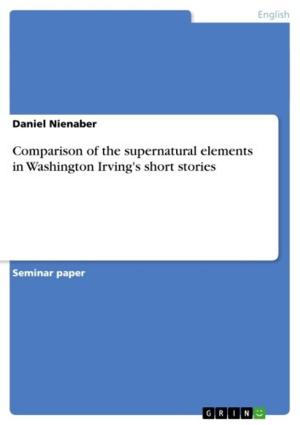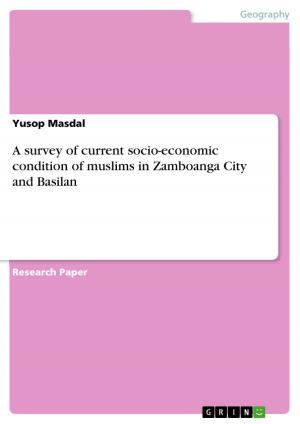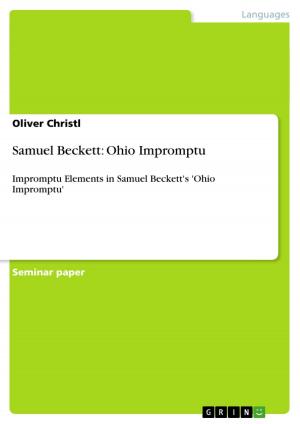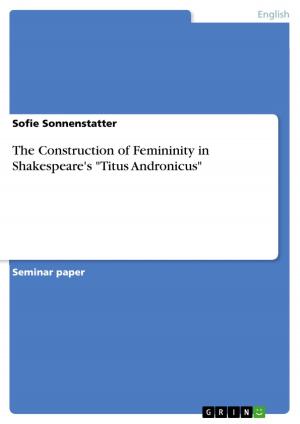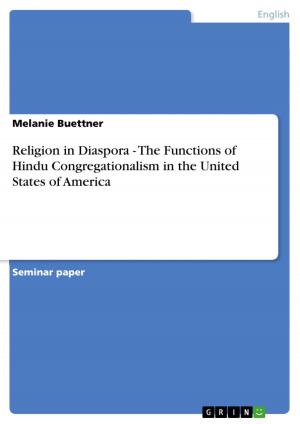| Author: | Andreas Seidl | ISBN: | 9783638196963 |
| Publisher: | GRIN Publishing | Publication: | June 11, 2003 |
| Imprint: | GRIN Publishing | Language: | English |
| Author: | Andreas Seidl |
| ISBN: | 9783638196963 |
| Publisher: | GRIN Publishing |
| Publication: | June 11, 2003 |
| Imprint: | GRIN Publishing |
| Language: | English |
Seminar paper from the year 2001 in the subject English Language and Literature Studies - Literature, grade: 2,0 (B), University of Regensburg (Faculty for Literature and Cultural Studies), course: Hauptseminar: W.H. Auden, 13 entries in the bibliography, language: English, abstract: The origins of a critical view on the focal points of civilizations may be traced back in history very far. Perfect examples of ancient critique on urban life may be found in the Old Testament, e.g. the depiction of the civilizations of Babel, Sodom and Gomorrah. The metaphorical content of these examples seems fairly clear: the reader is confronted with societies that either directly challenge the authority of God or don't follow his Commandments and are therefore punished by a divine father figure, which restores the natural and spiritual order. However, from the beginning, the city motive may also be seen as well as a means of discourse on mankind's cultural and social output. But modern city poetry is of course different from the ancient accounts of God's wrath, which lead to catastrophes for one city or the other. Its roots are to be found in the works of major eighteenth century poets, e.g. William Blake's London, in which he seems to recognize a new form of disorder being at work within the city limits. The nineteenth century brought forth poets like Wordsworth, who carried on to work on the theme but showed a different attitude towards the city. Because of its ever growing dimension, it was then perceived as a totally new and symbolic phenomenon, which raised philosophical questions about the state of society and the poet's role within this complex. The tone of the responses to these questions was for the most part uncertain and personal. Finally,the twentieth century gave birth to a new kind of urban literature and poetry, with a symbolic meaning of the city motive, which was as varied as the ethnical, religious, social and political shades of the human community it referred to. Nevertheless, two tendencies may be observed within modern poetry and prose, the first one dealing with the content of the city symbol: ' 'When the city ceases to be a symbol of art and order,' writes Lewis Mumford, 'it acts in a negative fashion: it expresses and helps to make more universal the fact of disintegration.' '1 The second one is the mode major poets such as T.S. Eliot in his famous The Waste Land attempt to cope with the reality of the twentieth century city: a controlling framework of myth, literature and history is employed in order to deal with the chaotic nature of their theme. Both points are to some extent true particularly for Auden's later works. [...] 1 Johnston (1984: 246).
Seminar paper from the year 2001 in the subject English Language and Literature Studies - Literature, grade: 2,0 (B), University of Regensburg (Faculty for Literature and Cultural Studies), course: Hauptseminar: W.H. Auden, 13 entries in the bibliography, language: English, abstract: The origins of a critical view on the focal points of civilizations may be traced back in history very far. Perfect examples of ancient critique on urban life may be found in the Old Testament, e.g. the depiction of the civilizations of Babel, Sodom and Gomorrah. The metaphorical content of these examples seems fairly clear: the reader is confronted with societies that either directly challenge the authority of God or don't follow his Commandments and are therefore punished by a divine father figure, which restores the natural and spiritual order. However, from the beginning, the city motive may also be seen as well as a means of discourse on mankind's cultural and social output. But modern city poetry is of course different from the ancient accounts of God's wrath, which lead to catastrophes for one city or the other. Its roots are to be found in the works of major eighteenth century poets, e.g. William Blake's London, in which he seems to recognize a new form of disorder being at work within the city limits. The nineteenth century brought forth poets like Wordsworth, who carried on to work on the theme but showed a different attitude towards the city. Because of its ever growing dimension, it was then perceived as a totally new and symbolic phenomenon, which raised philosophical questions about the state of society and the poet's role within this complex. The tone of the responses to these questions was for the most part uncertain and personal. Finally,the twentieth century gave birth to a new kind of urban literature and poetry, with a symbolic meaning of the city motive, which was as varied as the ethnical, religious, social and political shades of the human community it referred to. Nevertheless, two tendencies may be observed within modern poetry and prose, the first one dealing with the content of the city symbol: ' 'When the city ceases to be a symbol of art and order,' writes Lewis Mumford, 'it acts in a negative fashion: it expresses and helps to make more universal the fact of disintegration.' '1 The second one is the mode major poets such as T.S. Eliot in his famous The Waste Land attempt to cope with the reality of the twentieth century city: a controlling framework of myth, literature and history is employed in order to deal with the chaotic nature of their theme. Both points are to some extent true particularly for Auden's later works. [...] 1 Johnston (1984: 246).





